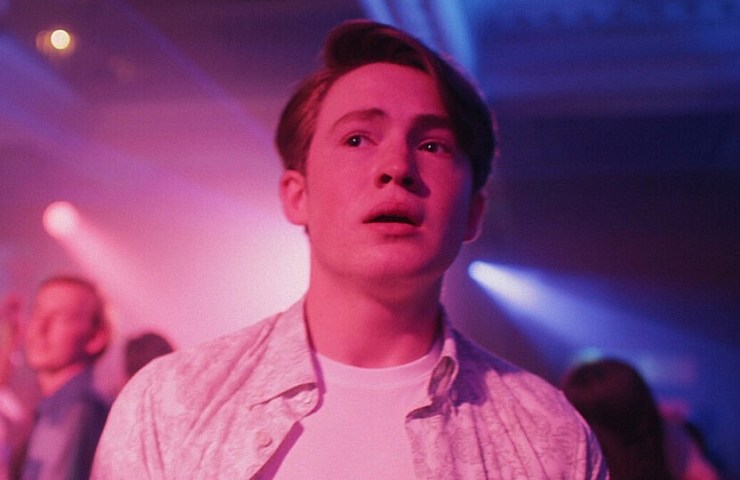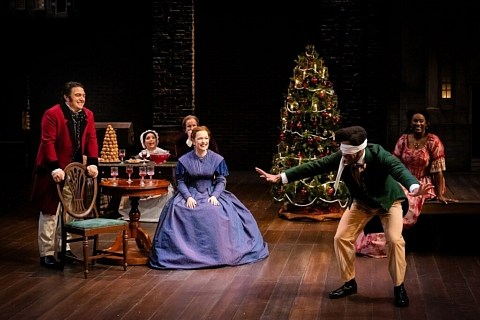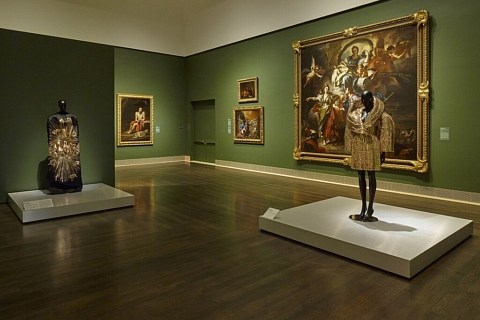Historically, queer characters in the media have been drastically under-represented and demonized, especially bisexuality. When there is queer representation, bisexual characters are often depicted as hypersexual and non-monogamous individuals that cannot control their sexual desires.
Author of the webcomic series, now Netflix show adaptation, “Heartstopper,” Alice Oseman saw this as an opportunity to change the narrative. Oseman turns every bisexual stereotype onto its head and sheds a beautiful, rare light on bi representation.
Given that every character has their own journey and hardships, it is impossible not to be attached and empathetic to each storyline. Especially with a young target audience, Oseman has made a safe space for adolescent and teenage LGBTQ+ identifying people to feel seen, heard and represented in a way never seen before.
“Heartstopper” has many LGBTQ+ characters represented: Charlie Spring (Joe Locke) and James McEwan (Bradley Riches) identifying as gay, Nicholas “Nick” Nelson (Kit Connor) and Sahar Zahid (Leila Khan) identifying as bisexual, Elle Argent (Yasmin Finney) as a transgender woman, Isaac Henderson (Tobie Donovan) and Victoria “Tori” Spring (Jenny Walser) as aromantic/asexual, Tara Jones (Corrina Brown) and Darcy Olsson (Kizzy Edgell) as lesbian and many more. The queer representation in this series has created a new way of viewing queer discovery and acceptance.
Focusing specifically on Nick Nelson’s portrayal of a young bisexual man, Oseman made his character a popular star rugby player at his all-boys school who has always thought himself straight, until meeting Charlie Spring.
Throughout the series, Nick navigates his new feelings and goes through a lot of emotional and social turmoil. His raw emotion and uncertainty in his sexuality is an experience many bisexual-identifying people can relate to.
Whereas many shows would simply label his character as gay or not give him an explicit label at all, “Heartstopper” provides the audience with a fully bisexual character by acknowledging his feelings for women in the past and now discovering his feelings for men as well. This level of representation makes queer audience members feel more honestly portrayed.
Shows and movies making characters fall victim to bisexual erasure by disregarding their attraction to women and men is customary to the point that a fully distinguished and labeled bisexual character playing a leading role is quite rare.
In the research study “Bisexuality, Mental Health and Media Representation,” Hannah Johnson dives into the relationships between bisexual erasure or acceptance in media and the damage it can do to the mental health of actual bisexual people. Johnson’s in-depth analysis of the effects of negative stereotypes perpetuating throughout all sources of media is a saving grace light shed on people who have felt ostracized in the mainstream.
Constantly seeing negative representation contributes to doubt and invalidation of self-worth. These stigmas against bisexuality are intensified only when improper depictions of bisexual characters are shown repeatedly in the mainstream, further perpetuating the image of a false reality.
Creating a safe space for bisexual women to exist outside of the male gaze and for bisexual men’s existence, in general, is extremely important. Especially to a community that has already been excluded from heteronormative mainstream society as a whole.
The effects of bisexual erasure are addressed in Season 2: Episode 3 of “Heartstopper” as Nick tries to come out to his friends. Being bisexual, he becomes anxious that his peers will not accept him and has the overwhelming concern that they will respond poorly, with things such as “Pick a side,” “You are going to cheat” and “Are you sure you’re not just gay?”
This scene truly highlights the lingering stereotypes of being bisexual and how it can make coming out or simply being bisexual extremely nerve-wracking. This perpetuates the bogus myth that bisexuality is not a legitimate sexual orientation, therefore contributing to the reinforcement of wider social bisexual negativity. Media representation, or the lack thereof, leads Nick to feel isolated and suffer an immense amount of anxiety.
A prevalent and recurring line by Nick is his constant “I’m bi, actually,” which instinctively becomes his immediate response due to people constantly assuming he is gay now that he is in a same-sex relationship.
Many fans of the show have expressed that Nick’s constant correction to the assumption truly resonates with them and validates their own experience, making them feel seen in a way no show has done before. This also makes sure Nick’s sexuality is not erased or lost because bisexuality in media has always been seen as a ‘phase’ or a ‘transition.’ It is all too common for bisexual men, specifically, to not be depicted at all, which makes Nick’s character more impactful. He is not only a great example of a well-rounded bisexual character, but he is openly and unapologetically bisexual!
However, “Heartstopper” has been met with criticism due to its innocent nature. One YouTube video even referred to it as a “gay show for straight people.” With Nick and Charlie being 16 and 15, they do not seem to be interested in anything beyond holding hands and kissing. These criticisms have been proven false, as in the comic book series Nick and Charlie have an unexplicit intimate moment, but it does remain censored due to the young target audience.
Yet somehow, this makes the bisexual representation of the show that much better. Often in the media, bisexual characters are subjected to an oversexualized nature, which is yet another harmful stereotype. Unlike many other bisexual portrayals, Nick is not oversexualized, untrustworthy or unfaithful. This is where Nick is a refreshing cleanse from this stereotypical damaging bisexual character trope.
This show also fights the unimaginative idea that bisexual people are incapable of either monogamy or long-term committed partnerships in a society where monogamy and couples are considered the norm. Unlike this stereotype, Nick and Charlie last together and have an endearing relationship that audiences love. This conformist belief is finally being broken by proper representation through Oseman’s characters.
Oseman’s representation of bisexuality through Nick Nelson in “Heartstopper” as a complex and authentic bisexual man is truly inspiring. This positive representation normalizes bisexuality and disproves common misconceptions, bringing a sense of validation and confronting biphobia for audiences. Nick’s character arc and experience discovering his sexuality provide validation in ways that many bisexual characters have never been able to, providing better visibility for a typically discredited sexuality.





Recent Comments